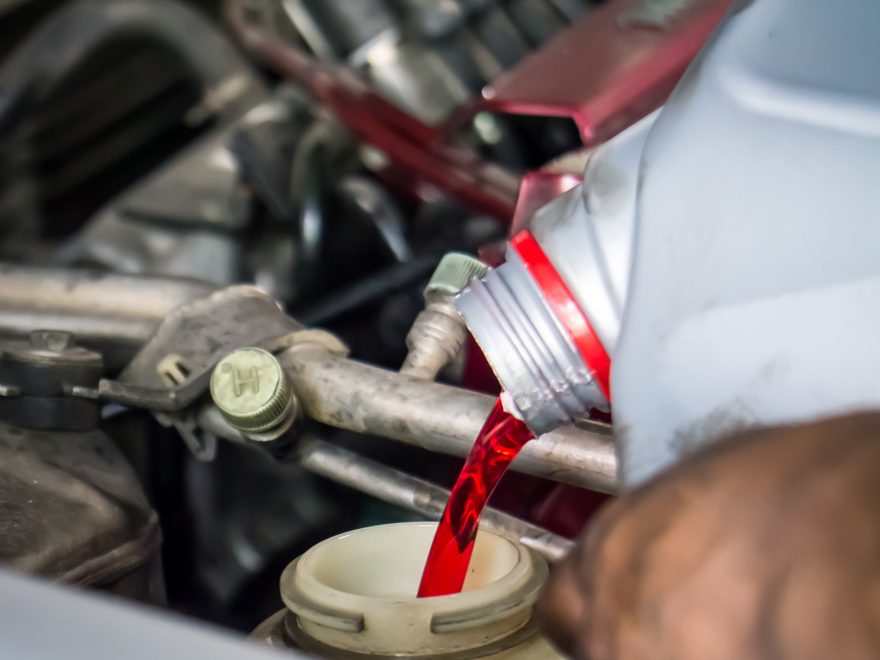Do you know the low transmission fluid symptoms to watch out for when taking care of your Honda? It’s a vital piece of maintenance to keep your car running in a smooth manner.
The good news is that taking care of your car is relatively cheap, as Honda is an affordable but reliable brand. Owners of 2014 models, for example, only spent around $145 in the three years leading up to 2017.
By taking good care of your transmission system, you can keep your maintenance costs down to as reasonable of a level as that.
Here are the 5 low transmission fluid symptoms you need to know about. If you notice any of these, get the problem fixed as soon as possible!
Find Your Online Car Repair Manual Today! ->>
1. Gears Keep On Slippin’
You can hear the engine revving up, the tachometer is climbing fast, there’s a clunk, and then your gears fall backward. Maybe you can also hear the engine working overtime before a shift.
This is one of the more noticeable low transmission fluid symptoms, as the shifts can be quite repetitive – and infuriating.
Diagnosing the problem here is fairly simple. In most cases, it happens because of wear and tear on the transmission box.
There aren’t many other possibilities. You need to top up your transmission fluid right away. Hopefully, you’ll notice there’s a problem before this becomes too serious to fix.
2. What a Drag
Not drag racing. Just dragging.
When the transmission isn’t locking into your gears in the right way, you may feel a dragging sensation pulling against your car as the engine struggles to push power through your vehicle. As a driver, you can feel quite powerless.
This has a close connection with the first point of our list. The lack of power is because your gears are slipping instead of stepping up properly.
You’ll feel that something isn’t right while you’re driving. The lack of access to higher gears will make life harder on the freeway, for example.
Low transmission fluid symptoms like these make driving a much less efficient – and less enjoyable – experience. This is often experienced in conjunction with at least one other symptom.
3. Gears Shift in Weird Ways…
Up and down, down and up – they keep changing, even though they shouldn’t. Inappropriate gear shifts are another of our low transmission fluid symptoms.
They can be quite sudden, or erratic. For example, the car might shift up twice, then down once – rather than just up once. Or the transmission might skip gears entirely.
That can happen going up or down, which can result in your engine under or overworking itself. This isn’t great for your engine. It’s also a sign that wear and tear is affecting your transmission.
Transmission fluid provides the hydraulic force needed to shift gears. Without it, the bare mechanics aren’t quite as good. This is why they might ‘skip’ a gear, then shift back down.
You might also notice juddering between shifts or hard, brutal shifts where the transmission slams into the next gear without warning. You’ll notice these without a doubt!
When you shift from reverse to drive, or vice versa, you’ll probably find something else to be wrong. There’ll be a delay between shifting the stick and the gear kicking in and doing its job.
This is due to low hydraulic pressure, which as above, is caused by a lack of fluid.
4. … Or They Don’t Shift At All
You’ve been driving for a while, but your car isn’t shifting gears. You might hear the occasional knocking noise, but mostly just the pain of the strained engine.
When there’s no fluid left, the system won’t work at all.
Of all the low transmission fluid symptoms, this is the most obvious – and worst – outcome. It’s unlikely to happen because of regular use, but it could happen if all the fluid has leaked out. For example, it can happen after the system has been damaged by an accident.
If your car has reached this point, don’t try to drive it. If you do, it may well end up needing a whole new transmission box. Don’t let that happen!
5. Ugh. What’s That Smell?
Don’t try to blame the dog for this one. One of the main low transmission fluid symptoms is an awful smell.
It’ll smell like burning and hot metal. That’s because it’s caused by hot metal. Transmission fluid keeps all the parts in the transmission moving in a fluid way, without much friction.
If there’s not enough fluid, the transmission is operating with a much higher friction coefficient. This leads to overheating, as the metal parts are grinding against other metal parts.
The transmission fluid helps to cool things down as well as smooth out the mechanical action.
Overheating is one of the low transmission fluid symptoms to look out for by itself. It’s not always accompanied by a smell, but the smell will come in time if left untended.
It’s not wise to leave this as a ‘job for tomorrow’. Heat is a killer when it comes to your transmission.
How Do I Fix Low Transmission Fluid Symptoms?
If the problem hasn’t progressed to something more serious, many low transmission fluid symptoms can be solved by topping up the transmission fluid.
Sadly, it’s not always this simple. Wear and tear can quicken its pace at an exponential rate when fluid runs low. Meaning that the parts can become damaged without hope of repair if the problem is left to run.
You need to act fast and decisively to save your transmission because it can be a very expensive part to replace.
Check our auto service manuals for more information on how to fix problems you’ve diagnosed, and get your Honda running in perfect condition again.






